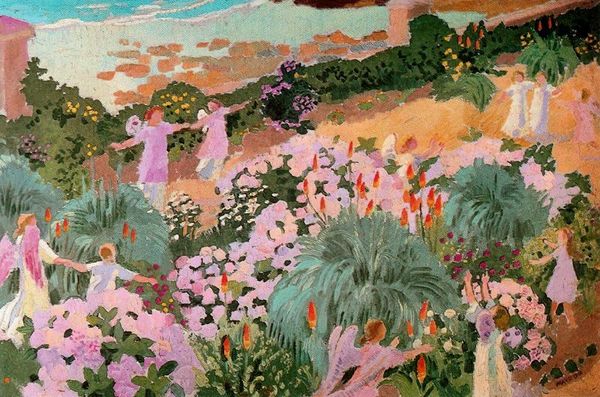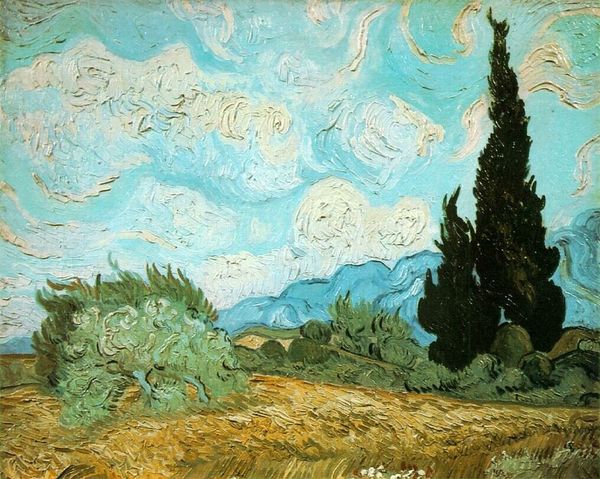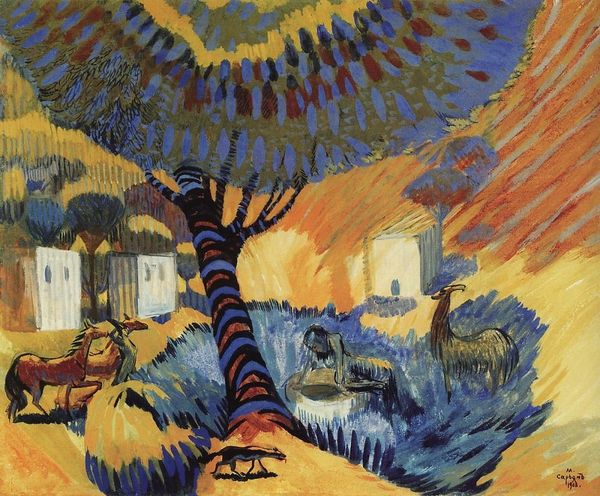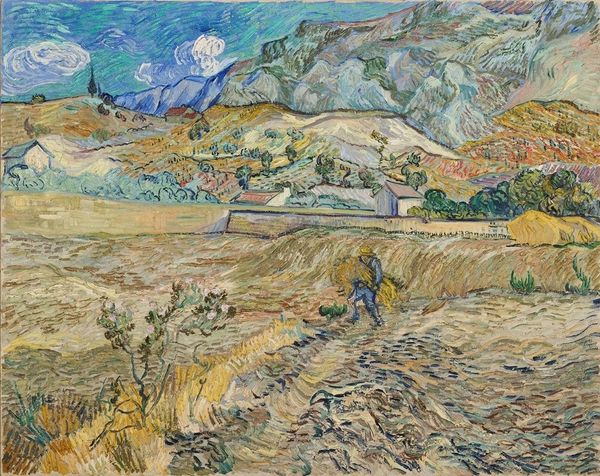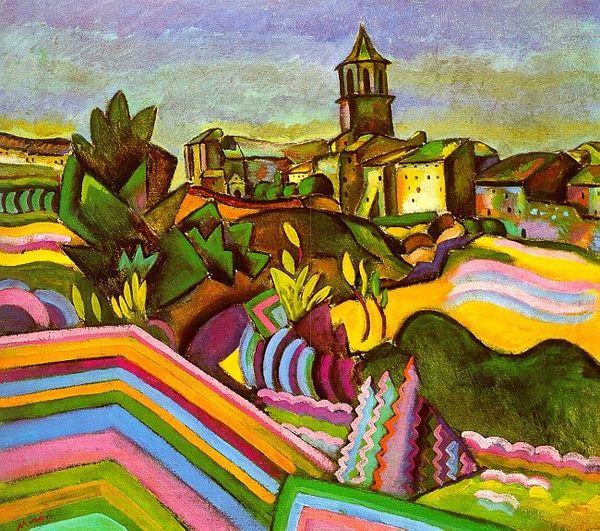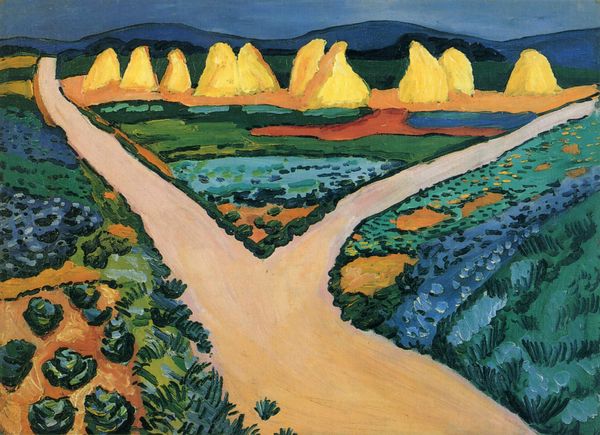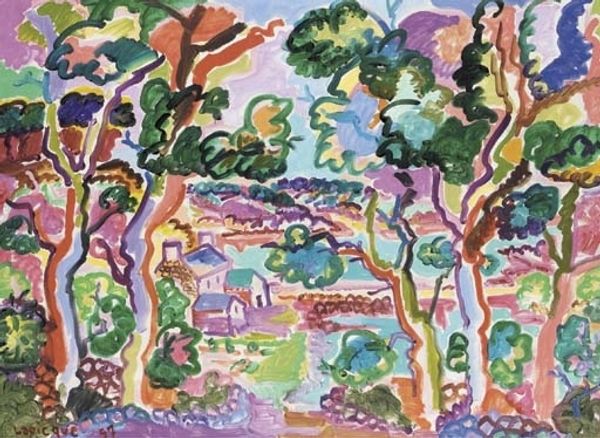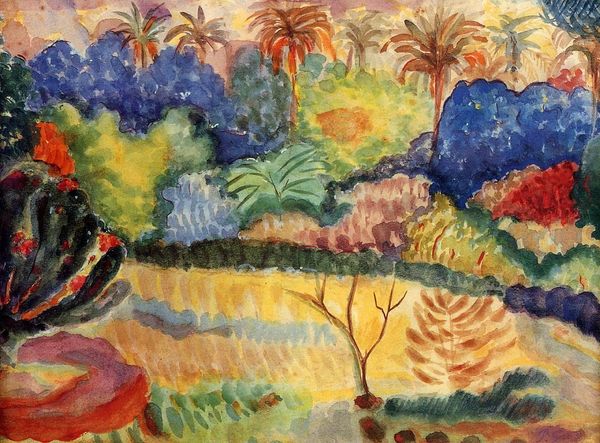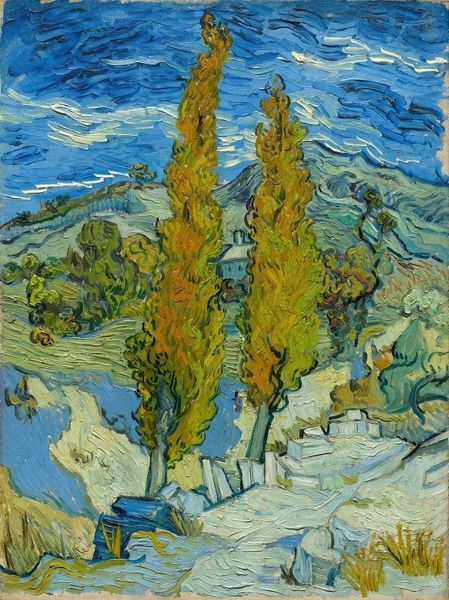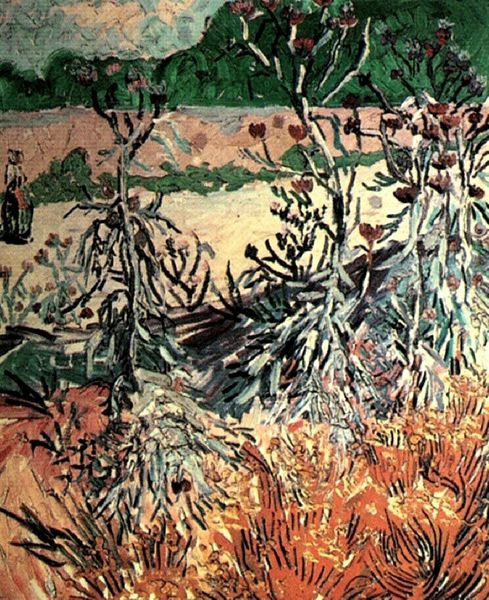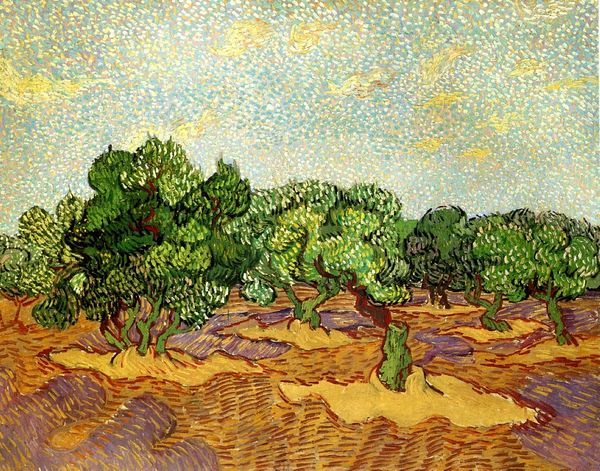
painting, oil-paint
#
abstract painting
#
painting
#
oil-paint
#
landscape
#
oil painting
#
naive art
#
abstraction
#
modernism
Dimensions: 75 x 75 cm
Copyright: Public domain US
Curator: Let’s discuss Joan Miró's "The Wagon Tracks," an oil painting completed in 1918. What's your initial response to it? Editor: There's a sense of peace, yet also of constraint. The colors are muted and somewhat bleached by the sun, and it's all so meticulously rendered. But that path cuts right through – promising somewhere beyond. Curator: Precisely! We can view this painting through the lens of Miró's developing artistic and political consciousness. He created it while avoiding military service during World War I, finding solace in the Catalan countryside. This escape is both physical and psychological. Editor: Ah, escape. The wagon tracks become potent symbols then – literally and figuratively. Carts, migration, pathways toward emancipation but also potential circularity: what symbols do they trace in society at this period? Curator: Exactly. Post-impressionistic renderings often represented the elite's escape to the countryside for leisure, this feels different. Here, it reads more like an active rejection of oppressive societal forces by locating freedom through the wagon path, which are also, the common man's vehicle to travel. Editor: This path seems like a statement of belonging to that local landscape in relationship with labour instead. So different from say, Monet! One symbol I find intriguing is the high horizon line, with that pale azure sky occupying such a substantial upper region. Its expansiveness seems a beckoning call. Curator: I agree completely. The wagon tracks in their physical form, as well as that large expanse of sky become tools for Miró's silent, but significant expression. A means of quietly subverting the narrative of war with a promise of perseverance by working in sync with nature and fellow inhabitants, while locating himself as one with them. Editor: A fascinating counter-narrative, then, emerging out of conflict and individual agency. It reminds us of the human will to locate and pursue alternative realities through everyday life. Curator: Indeed. It showcases Miró's genius in conveying resistance, both physical and existential through simple yet incredibly thoughtful compositions. This exercise was enlightening!
Comments
No comments
Be the first to comment and join the conversation on the ultimate creative platform.
